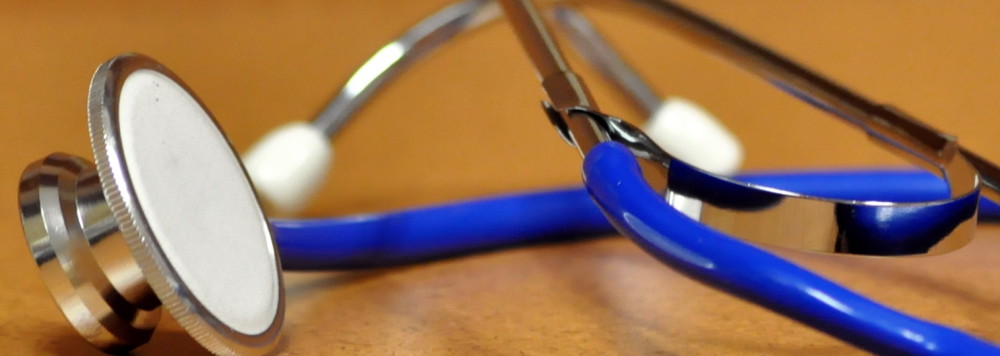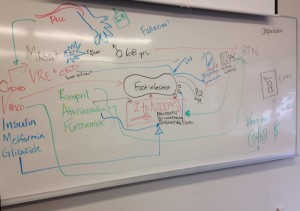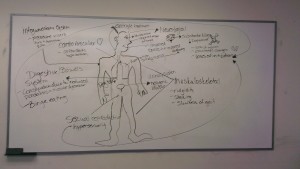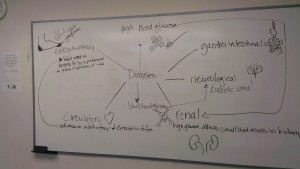Reflective Learning a Change in Paradigm
Over the last 30 years, a relatively short period of time in the entire existence of a profession, nursing education has moved from a positivistic and behaviorist paradigm towards a more qualitative approach based on emancipatory philosophies and critical social theory (CRNBC, 2012; Pierson, 1998). Only since 2007, here in British Columbia, have nurses been required to attain a baccalaureate degree to practice as an RN (CRNBC, 2012). The shift towards a baccalaureate level minimum was fueled by the need for critical and innovative thinking nurses (Fakude & Bruce, 2003; Pierson, 1998; Taylor-Haslip, 2009). It is no longer enough for a nurse to know what to do and how to do it, they must also know why; in knowing why the nurse can critically evaluate his or her actions and make changes in his or her practice and/or advocate for change within the system (Fakude & Bruce, 2003; Pierson, 1998; Taylor-Haslip, 2009).The move towards critical reflective practice has made for changes in the structure and approaches of nursing educational programs; critical reflective practices are now the cornerstone of nursing education (Fakude & Bruce, 2003; Pierson, 1998; Taylor-Haslip, 2009).
Reflective Journaling as a Tool for Reflective Practice
In nursing education, reflective journals are one of the most widely used methods for critical reflection (Fakude & Bruce, 2003; Pierson, 1998; Taylor-Haslip, 2009). The practice of journaling allows the writer to become a participant observer of their own learning (Fakude & Bruce, 2003; Forneris & Peden-McAlpine, 2006; Pierson, 1998; Taylor-Haslip, 2009). Reflective journals also provide the opportunity for the instructor to enhance his or her understanding of the students’ experiences and the impact of these experiences (Fakude & Bruce, 2003; Forneris & Peden-McAlpine, 2006; Pierson, 1998; Taylor-Haslip, 2009).
Marking Journals: Applying Value to Self-Reflection
In the case of reflective journaling, as with any academic assignment, there is value assigned to the final product. It is important for instructors to recognize that the journal is not an evaluation of the students’ learning, to treat it that way would inhibit true self-expression and self-evaluation resulting in editing to meet the expectations of the instructor (Fakude & Bruce, 2003; Forneris & Peden-McAlpine, 2006; Pierson, 1998; Taylor-Haslip, 2009). Format guides can be used for marking but the expectation is that marks are assigned for format rather than for content (Fakude & Bruce, 2003; Forneris & Peden-McAlpine, 2006; Pierson, 1998; Taylor-Haslip, 2009). Criterion have been developed to assess the students’ level of critical reflection; these should not be used for marking purposes but should rather be used to provide an indication of the students’ level of proficiency allowing for feedback, encouragement and support to promote critical reflective thinking (Taylor-Haslip, 2009). As cited in Taylor-Haslip, the Hatton and Smith reflective criteria, defines four levels of critical reflective writing:
- Level one: Descriptive, student reports events and details environment.
- Level two: Descriptive Reflection, the writer attempts to provide reason but often only looks at one possible factor.
- Level three: Dialogic Reflection, often written as a narrative internal dialogue, less time is spent reporting events and more time discussing experiences and outcomes.
- Level four: Critical Reflection will include clear rationales for actions and decisions, taking into account the broader theoretical, historical, social, and political contexts of experience, multiple perspectives are identified and examined (2009).
As previously mentioned, grade value should not be ascribed to the level at which the student is expressing his or her self, the criteria is for the instructor to identify where the student is at in order to provide encouragement, feedback and coaching to improve the students’ ability to critically reflect (Taylor-Haslip, 2009).
Reflective Journaling: Experiences as a Student
Having graduated not that long ago I have had to write my fair share of reflective journals, in fact some of those journals were written for and submitted to W. Pierson, the author cited throughout the above paragraphs. I loved being in W. Pierson’s class, she was one of my favorite instructors, tough but fair! Truth be told though, I hated writing journals for her. Journals were the bane of my nursing program existence, and it wasn’t just me who felt that way, in fact most of my peers were even less inspired to write a journal than I was. I remember thinking that it was all an exercise in futility, I would find a subject describe the event, describe my reaction and discuss different ways of approaching the same or similar situations, the instructor would send it back with a nice comment and would encourage me to keep thinking critically. Perhaps not all my peers received this sort of feedback? But as I saw it, journaling served little purpose, just another hoop to jump through.
Reflective Journaling: Experiences of a Novice Nursing Instructor
So why would I blog about something that I found so trivial and useless in my own education? Well, as a nursing instructor I am now assigning journals and I feel it is imperative that I understand the rationale for and the practice of reflective journaling. I do not want my students to pick up on the fact that I am not fully in support of the practice of journalling; nothing deters a student from putting effort into their assignments more than an ambivalent instructor. But more than anything, since starting to instruct, I now see the value of the reflective journal and I wanted to share my experience, through this blog…. In essence I am creating an electronic critically reflective journal.
It took becoming an instructor for me to see how important reflective journaling is to the development of the critically evaluative nurse. I know my students balk at the idea of journaling and I know that many of the journals I receive have been written in haste the night before they are due; even so, the journals I receive are rich with experiences and filled with meaning. As an outside observer, I only see actions and outcomes, I am not privy to the way in which the student perceives their experience and makes sense of it. When reading a journal though, I get to see their thought process, I get to read about their emotions in response to situations, I can see their uncertainty, read about their questioning of the status quo, it is all there on a piece of paper.
I will provide an example of how useful the insight derived from reading a journal can be forboth the student and the instructor. I am not very proud of this, but being human I do sometimes pass judgment based on appearances. I had a new group of second year students, pretty much a standard mix of nursing students, a variety of age groups and cultures, coming from a variety of different educational backgrounds with a variety of different motivational factors that lead them to this point in their nursing education. There was one young woman in the group that seemed a little out of her element though, she was well groomed, she was mostly quiet but when she spoke there were a lot of ums and ahs, she seemed to wander around the unit aimlessly and she was a bit germ phobic (she would put on patient foot covers over her shoes every morning to protect her footwear). Not exactly the kind of go-getter one would hope to find in a group of second year nursing students. I tried to be unbiased and non-judgmental but I was concerned that she might not be at the level she would need to be at in order to function on this busy eclectic unit.
At the end of the first week I assigned a reflective journal, of course the students all balked, they were concerned that they would have little to write about, so I encouraged them to write about their impressions of the unit, their experiences so far and their feelings about the uncertainties that lay ahead. I generally don’t expect a high degree of reflective thinking in the first journal, I often use the first journal to assess the students’ ability to identify his or her concerns about the clinical setting and to assess writing skills.
The first journal I received was submitted 2 days early, it was from the student I previously described. I was concerned that she had submitted it early and I thought perhaps she had not put a great deal of effort in into the assignment. With lowered expectations I started to read her journal. She wrote about her experiences that week caring for two different clients with communication barriers; one client was hearing impaired and the other client spoke only Chinese. In her journal she discussed how vulnerable her clients must have felt, not only being ill and in hospital but having things complicated by communication barriers. She went on to explain how she had developed a rapport with the hearing impaired client, having pad and pencil ready whenever she went in to see the client. She outlined how she had worked throughout the day with her Chinese speaking client, to develop a sort of sign language that she could use to communicate with the client. She identified that she understood as a student caring for one patient at a time, she had the time and ability to work on developing a rapport with these clients. She went on to discuss the difficulties faced by the nurses on this busy unit and she wondered how difficult it was for them to provide adequate care to all of their clients, let alone special needs clients. She expressed concerns about her future, wondering how she would be able to provide empathic and quality care when she was expected to care for four patients at a time, many of whom, she indicated, may have barriers or complicating factors. She ended her journal by saying she felt that she had made a difference in the lives of the patients she had cared for.
I sure felt like a fool, not only was she sitting at a level four for critical reflection on the Hatton and Smith sacle, she wrote beautifully and her APA formatting was impeccable. The old adage about judging books by covers came to mind.
It is my practice to meet with each student to review their journal so that I can provide coaching on the critical reflective process and feedback on APA formatting. When I met with this student I told her how impressed I was by her critical reflective journal, I explained that not only was she able to articulate her thoughts and questions but that the degree of empathy with which she framed her observations was incredible.
Afterwards we discussed her aspirations in nursing, she told me it was her hope to become an infection control nurse, a perfect career choice for the germ phobic nurse. We talked about her past experiences, and she explained that many of her instructors had not been supportive so she was questioning if she should continue on. I asked her to hang on through this clinical and see how she felt at the end, because she was intelligent, insightful, and empathic all the things a nurse should be.
And to think, I was almost one of those instructors that failed to see the great potential embodied within this student. In the end she decided to keep on with nursing and I am pleased to tell you that she will be graduating in less than a year.
My Reflections on Reflective Journaling
Journals are powerful tools of reflection for students and teachers alike. It has been my experience that as the semester progresses there is a measurable difference not only in the quality of the content but also in the level of insight that is demonstrated. I observe in practice how students approach situatations differently having reflected on their previous experience. I provide based on not only what I observe but on what I have read within their journals. I am now a believer in the power of critical reflective journaling. I wish that I had not so carelessly thrown out all of my journals from my days as a nursing student, I can’t help but wonder how the experiences and learning detailed within them contributed to the nurse I am today.
Now when my students balk at the idea of having to write another reflective journal, I am sure to explain that journaling is about their experiences and their interpretations, the journal is for them to express and reflect. I tell them that I don’t really care what they write about but I do care that they put in a genuine effort, because their journals provide me with valuable insights as to who they are, how they think and what they feel. And I tell them “Please don’t blow this off, there is real value in what you are doing, even though you may not realize it right now. Just trust me on this.”
References
Fakude, L., & Bruce, J. (2003). Journaling: A quasi-experimental study of student nurses? reflective learning ability. Curationis, 26(2), 49-55.
Forneris, S., & Peden-McAlpine, C. (2006). Contextual Learning: A Reflective Learning Intervention for Nursing Education. International Journal of Nursing Education Scholarship, 3(1).
Pierson, W. (1997). International Journal of Nursing Education Scholarship. Journal of Advanced Nursing, 27, 165-170.
Taylor-Haslip, V. (2009). The Use of Guided Refl ective Journals in Clinical Nursing Courses. In Transit, 4, 28-39. Retrieved from http://ctl.laguardia.edu/journal/v4/default.htm
Related Articles



